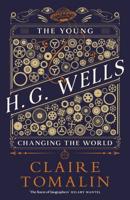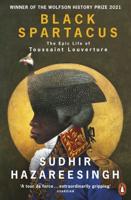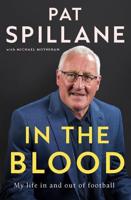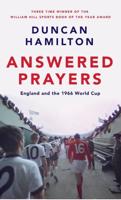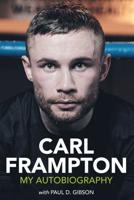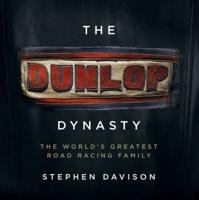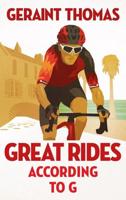Publisher's Synopsis
The book takes as its starting point Pete Sampras winning his second consecutive Wimbledon singles title in 1994. Shortly after coming off court, he is visibly distressed by news of the death of his idol, Lew Hoad, at the age of fifty-nine. Hoad's progress is traced from humble beginnings in a Sydney suburb to becoming one of the greatest tennis players the world has ever seen. Often referred to as the "Golden Boy" of tennis, blond, good-looking Hoad was probably the first ever tennis superstar. In this book, his incredible feats "on court" as well as the colourful and dramatic events "off court", are unfurled against a backdrop of major changes in the sport. The book takes as its starting point Pete Sampras winning his second consecutive Wimbledon singles title in 1994. Shortly after coming off court, he is visibly distressed by news of the death of his idol, Lew Hoad, at the age of fifty-nine. We then trace Hoad's progress from humble beginnings in a Sydney suburb to becoming one of the greatest tennis players the world has ever seen.;His early tussles with life-long friend and rival, Ken Rosewall, are described - the diminutive Rosewall who was three months his senior and thrashed him 6-0, 6-0 in their first four matches. Later chapters focus on his epic win as a 17 year-old with Rosewall in the Men's Doubles at Wimbledon in 1952 when the "twins" as they were known caused a sensation by beating the American second seeds, Dick Savitt and Gardner Mulloy. More heroic exploits followed in the Davis Cup Final against the United States the following year. Hoad, playing his first Davis Cup, defeated Tony Trabert in a match that has gone down in the annals of Davis Cup history as one of the best and most exciting ever played. Australia had retained the Cup. With his blond good looks (he was often described as a 'blond Adonis'), strapping physique, and spectacular power play, Hoad never lacked female admirers and his teenage romance with the beautiful and talented young Australian tennis player, Jenny Staley, blossomed into a love that lasted for the rest of his life. Just prior to the 1955 Wimbledon they were married in a church close to the Championship grounds.;Like Lew's earlier Wimbledon matches, this one produced headline news as reporters got wind of the marriage despite desperate attempts to keep it secret. In 1956, his annus mirabilis, Lew Hoad won the Australian, Italian, French and German singles titles as well as Wimbledon where he defeated his old rival, Rosewall. However, Rosewall got his revenge in the U.S. Championships later that year. It was a victory that brought joy and sadness in equal measure because he'd deprived his friend of the one remaining title he needed for the cherished Grand Slam (winning the Australian, French, Wimbledon and U.S. titles in the same year). There were troubles looming, however. Lew became increasingly concerned by a back problem caused by a boyhood Australian Rules football injury. In the year following his Wimbledon triumph, he lost his Australian title to Ashley Cooper and there had been disappointing defeats on the red shale courts of Italy and France. In Australia, newspapers dismissed their wonder-kid as a But by the time Hoad arrived in England for the grass-court season, he'd experienced an amazing transformation. Cont.;Suddenly his back felt good, his concentration was sharp and he was hitting the ball with power and precision. A string of tournament wins led to Wimbledon where he was seeded number one. Walking on to the centre court for the opening match, he was greeted with a standing ovation. To the British crowd, this modest, blond Australian was an idol - a Golden Boy whose serve and volley game was perfectly suited to grass. On his way to the final, Hoad honed his game against some of the best players: first the Frenchman, Pierre Darmon; next, mighty drinking partner and fellow-countryman, Roy Emerson; then Davis Cup team-mate, Merv Rose; and, in the semi-final, the redoubtable Swede, Sven Davidson. The final, against the number two seed, the debonair, darkly handsome, Ashley Cooper, was one of the shortest on record. It was a demolition job with Hoad hitting scaring winners from every part of the court, serving thunderbolt aces, and dominating the net. Years later, he said: "This was the kind of tennis I had always dreamed I might one day be able to play." After just 56 minutes, Cooper's agony was over. He won only 30 points in Hoad's 6-2, 6-1, 6-2, victory.;The next day, papers around the world celebrated Hoad's win. The London Times said: "Hoad consigned his unfortunate fellow Australian, Ashley Cooper, to the realms of a mere mortal while he himself strode Olympian heights." And, in more light-hearted vein, another English paper, the Daily Miror commented: "Hoad served more aces than a crooked gambler." This was to be Hoad's last appearance at Wimbledon. Within hours of his victory, he joined Jack Kramer's professional troupe and was on his way to America. Waiting there for Hoad was the most hated and feared man in tennis - Pancho "The Black Tiger" Gonzales. A poor Mexican kid, he'd turned pro so young that most of the "established" tennis world had never seen him. Regarded by fellow pros as the "meanest, dirtiest, toughest player ever", he despised amateurs and relished thrashing them when they turned pro. Now he looked forward eagerly to annihilating the so-called "best in the world". A head-to-head 100 match world tour between Hoad and Gonzalcs had been arranged and soon Lew began to gain the upper hand. People fortunate enough to witness these matches said the tennis was unbelievable.;Then one night in Kentucky, Hoad went for a smash and felt a terrific pain cut across his lower back. In a single, flashing second, his career was over. A specialist diagnosed sciatic neuritis. This meant little to Lew but the words "Your back will never be cured" did. No one ever doubted his courage: he played on but was sometimes in such agony, he couldn't stand erect. There were, though, periods of time when, mysteriously, the pain eased and Gonzales knew he had a fight on his hands. At one stage, he won 5 matches in a row and, in one match, playing sublime tennis, he took the first set 6-0 off a blinking gonzales in 13 minutes. Eventually, however, Gonzales won the series 51-36 and Hoad was forced into virtual retirement. He and Jenny found a plot of land near Mijas in Southern Spain. In this idyllic setting, the mountains behind them, the Mediterranean just a few miles away, they created one of the most beautiful tennis clubs in the world - the Campo de Tennis. The Hoads started a new carrer - coaching, and people flocked from all over the world to pick up tips from the Master and share memories and beers with him at the bar.;When he died, tributes poured in, revealing the love and affection this extraordinary man inspired. The headline from respected tennis writer and family friend, Richard Evans in the Times provides a fitting epitaph for Hoad: "Tough, loyal and as straight as an arrow."

